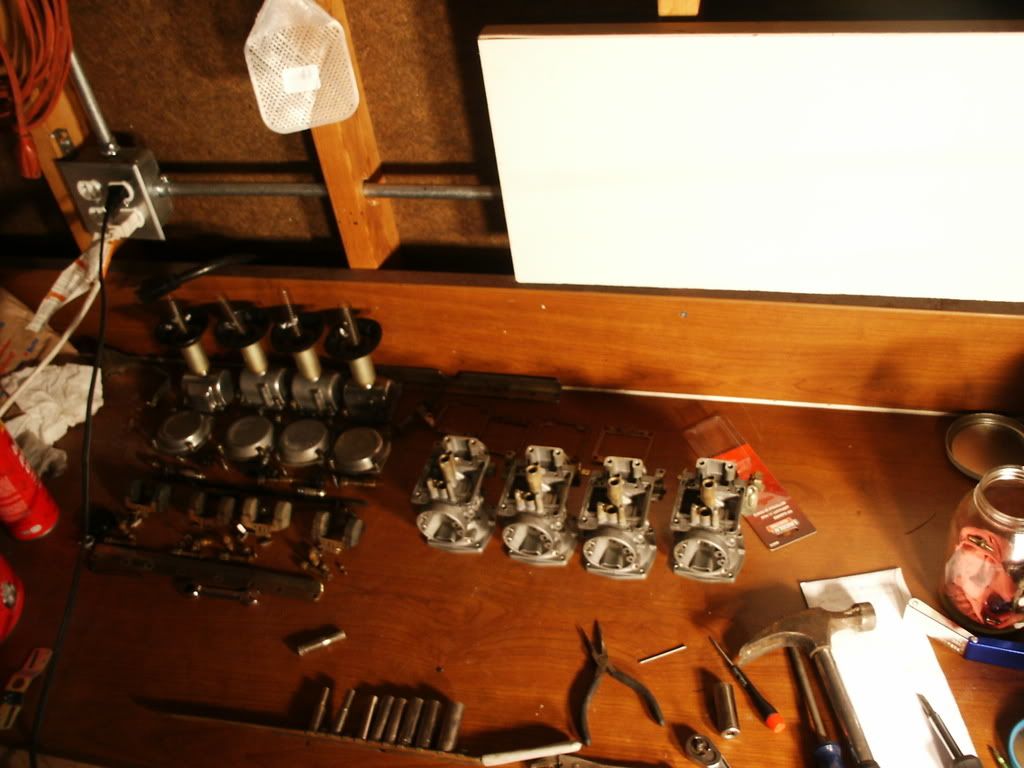Road Rash's bike sat for a few years and the carbs got all gummy: 82 GS1100GL; 10G on the clock. Anyways, I tore the carbs down (did not separate), and poked, prodded, cleaned with carb spray and installed what I am assuming to be shoddy aftermarket needles. (partsnmore)
The bike has recently within 500 miles had
1) valves adj (shims)
2) new manifold boots and o-rings with a tight airbox.
3) Checked for any external air leaks and all checked out well, but still experiences a long warm up time... Idle screws are out 3_1/4 turns to achieve the highest RPM and then a tad richer.
4) Of course they were sync'd
Here's my first interesting observation, the fuel level in my bowls ( I also own an 82GS1100GL) were lower than his by 3 mm. Notice I didn't say float height, but actual fuel level was higher in his bowls than mine, yet mine runs like an ape and his still runs lean with the choke on for a long time. I assume something must be clogged that the little poking wire just couldn't get to. I even shot carb cleaner through the carbs and all orifices were open, or so I thought.
1) So with the fuel level being higher in his bowls and his bike still running lean can we safely assume the needles(even though they are aftermarket) are ok? His original OEM needles were gummed stuck and warranted replacement and I didn't know any better at the time.
2) Should I tell him to spring for new needles and seats (OEM) and new plugs (little black ones in the carb) for the bike?
3) I also noticed in the carb rebuild series the butterfly was never removed and the carb was dipped, but what about the seals on the outside of the butterfly shaft? 13651-51010's? 2 per carb. Do they not get destroyed by the carb dip?
I did pick up the Berryman's carb dip, but was concerned about the butterfly seals being chewed up and causing further problems. The screws are peened in the shaft and would most likely be a real chore to pull them out and then to have to purchase new screws if they didn't chew up the shaft.
Any thoughts or comments welcomed.
P.S. I did compare my factory OEM needles to the aftermarket and I could tell a difference with how the spring tension was. It was still a baffling discovery to find out the carbs with the higher fuel level run lean.
I also have a Robert Barr O-ring kit that will be installed.
Thanks for your time!
.png)

.png)
 It was a VERY clean carb with no problems. \\
It was a VERY clean carb with no problems. \\ /
/
Comment